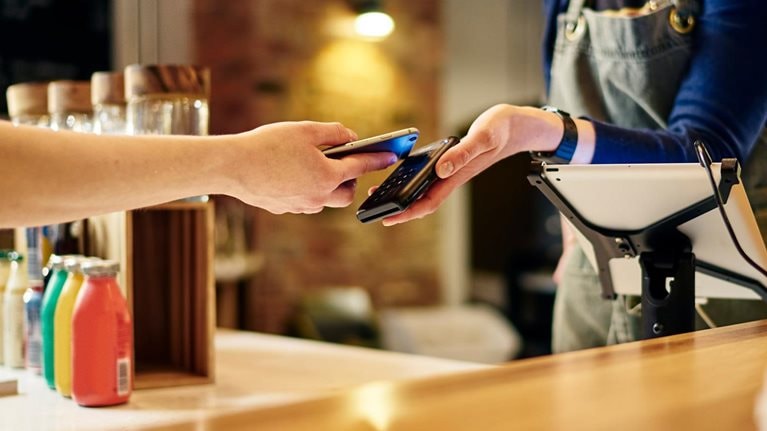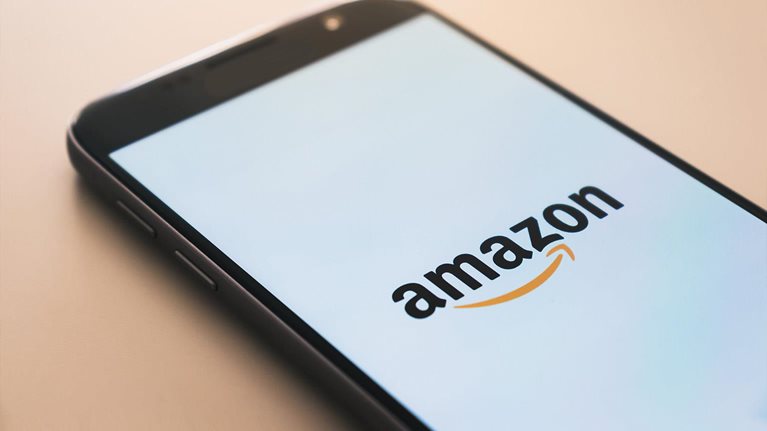The US holiday-shopping-season events have always been important, and they are becoming even more so. In the weeks between last Thanksgiving and Christmas, US consumers spent a record $850 billion. This was up 5 percent over 2017 and was the largest sales jump in six years.1
In 2018, nearly all this growth was due to accelerating momentum in online sales, as holiday mall stampedes have given way to the unprecedented ease and convenience of digital shopping. E-commerce holiday sales leapt 19 percent over 2017,2 marking a trend that is projected to continue. To drive positive sales for this year’s holiday season, retailers will need to start now with a laser focus on digital execution. Even though in-store sales remain substantially larger than online sales, e-commerce is the arena in which retailers can drive sales, win new customers, and create consumer excitement during the all-important holiday shopping season.
We took a detailed look at last year’s digital winners and what lessons retailers can draw from the results. Even though Thanksgiving is still several months away, the battle for holiday sales starts now. Most retailers are already allocating promotional and merchandising dollars, and anyone wanting to be a winner this year will need to make digital operational excellence a priority.
Amazon dominated with consistent performance through the entire holiday shopping season
There’s no denying Amazon’s power. Last year, the company led the retail sector with strong performance during the bonanza Black Friday and Cyber Monday shopping days and throughout much of December. Leading up to the 2018 holiday season, 81 percent of consumers in the United States reported they intended to shop during Black Friday on Amazon.com.3 In fact, Cyber Monday (November 26) was the company’s biggest shopping day of the year, with online sales and traffic outstripping Prime Day and Black Friday. To put this in perspective, Amazon had five times the traffic on Cyber Monday as other leading retailers, and it was able to convert a greater percentage of this traffic into sales than any other retailer.4 Eleven percent of its Cyber Monday visitors ended up buying something, a 15 percent increase over the company’s normal conversion rate.5
Over the next four weeks, Amazon’s traffic surged even higher, and its conversion rate stayed at this same elevated level, whereas other retailers saw their average December traffic and conversion rates drop off once the extravagance of Black Friday and Cyber Monday was over.
Would you like to learn more about our Marketing & Sales Practice?
Successful retailers ran a suite of promotions starting on Black Friday and going into December
Other big winners during the holiday season were Best Buy, Target, and Kohl’s. Yet where Amazon performed consistently throughout the season, these brick-and-mortar retailers derived their success from a string of big promotional days. Best Buy was the leader among all retailers (including Amazon) in terms of boosts to online traffic and conversion rates on Cyber Monday and Black Friday. The company’s traffic surged fivefold, and its conversion rate increased twofold relative to normal rates (as compared with Amazon’s relatively modest 70 percent traffic increase and 86 percent conversion lift). Kohl’s increased its traffic by a factor of 3.5 and its conversion rate by 93 percent. Each of these three retailers led with deals on big-ticket items, offered free shipping with no minimum purchase, and built hype well before the Black Friday/Cyber Monday stretch started.
After Black Friday and Cyber Monday, successful retailers featured numerous December promotions. Best Buy gave shoppers deep discounts on one big-ticket item every day from December 1 through December 20 and drove consumer excitement with its “Nick of Time Deals” on December 14, which featured hot prices on TVs, iPhones, speakers, and other electronics. Target advertised weekend deals throughout December, and Kohl’s gave 25 percent coupon codes for all orders on December 8 and during the weekend before Christmas. Both retailers also gave Black Friday shoppers who spent at least $50 significant discounts or cash for future holiday shopping. As a result of these promotions, Kohl’s, Target, and Best Buy had December traffic and conversion-rate increases roughly three times that of retailers without similar sales. Macy’s, for instance, didn’t run major sales until after Christmas and had soft online sales for the month.
Winning retailers offered uber-convenient shipping
Companies that matched Amazon’s two-day shipping policy won big with consumers, especially in the days prior to Christmas. By offering free, two-day, no-minimum-purchase shipping, Best Buy and Target made sure customers wouldn’t pay extra for the convenience of shopping online. This drove an average 146 percent uplift in their online conversions in December (as compared with September and October), which, for Target, did not come at the expense of store sales. The company saw positive comparable store sales in November and December. In contrast, retailers that gave free two-day shipping only to customers who spent over a certain amount experienced a much lower uplift—94 percent—in online conversions.
Another successful tactic for motivating consumers to buy was last-minute shipping. Retailers that ensured Christmas arrival for purchases made by December 20—Target, Best Buy, Walmart, Macy’s—saw much higher conversion rates in the last week before Christmas. Yet while stretching the deadline to December 20 made online visitors more likely to buy, it didn’t help boost overall traffic, largely because many consumers still felt more comfortable heading into stores in the final days before Christmas.

Black Friday 2018: Consumers are eager, more digital, and willing to spend
Click-and-collect was a competitive advantage for brick-and-mortar retailers
When Christmas shopping came down to the wire in the last few days, consumers did not rely on Amazon. Even though Amazon promised last-minute Christmas shipping—for orders placed by December 22—the company’s traffic and conversion rates actually dropped compared to its normal baseline (down 9 and 18 percent, respectively) during the three days leading up to Christmas. Consumers looked instead to brick-and-mortar retailers, either for in-store shopping or for the increasingly popular option of buying items online and picking them up in the store. Retailers that offered click-and-collect through Christmas Eve (Best Buy, Target, Walmart, Macy’s, and Kohl’s) saw additional online traffic and higher conversion rates (an average increase of 52 percent).
Store pickup was also a big factor in driving online sales throughout the holiday season. Shoppers increased their click-and-collect purchases by 50 percent on Black Friday and 65 percent on Cyber Monday compared with 2017. Best Buy and Target, which featured same-day store pickup on Black Friday, Cyber Monday, and through the holidays, were particularly successful at drawing in customers because they could offer shoppers instant gratification. Target also featured a drive-up service in about 1,000 stores, allowing customers to have their packages delivered to their cars. Over the entire holiday season, Target grew its click-and-collect business by more than 60 percent over the previous year.6
Strategies for a successful 2019
Based on our analysis of 2018 data, there are four actions retailers should take in 2019 if they want to drive sales increases and be competitive with Amazon.
1. Focus on Black Friday for holiday planning.
Given Amazon’s stellar performance on Cyber Monday, brick-and-mortar retailers can gain an advantage by developing an integrated approach to Black Friday as their springboard into the holiday season. Although Black Friday is no longer the literal door-busting event it used to be, shoppers still associate the day with brick-and-mortar companies and are less likely to default to Amazon. To take advantage of this and gain a bigger share of the day’s wallet, retailers should aggressively promote same-day click-and-collect as a competitive advantage and feature big deals on the most popular and relevant items.
2. Plan for a strong and sustained holiday strategy that starts earlier in November and extends through December.
Big promotions shouldn’t be confined to Black Friday and Cyber Monday. Retailers should consider tactics such as preview sales in November and days of deals or big weekend promotions in December to excite consumer interest. This kind of sustained strategy is a lever for staying visible and relevant, driving additional traffic, and gaining a meaningful share of consumers’ mind-sets and purchases.
3. Raise the bar on convenient shipping and fulfillment.
Thanks to Amazon, free two-day holiday shipping is now table stakes for meeting consumer expectations and posting successful holiday sales. Already this year, Amazon has begun its shift to free one-day shipping, and Walmart has followed. Walmart expects its one-day shipping to be available to 75 percent of US consumers by the end of 2019.7 During the holiday season, retailers should also seek to take advantage of the five-day window before Christmas when Amazon is weak. Brick-and-mortar retailers have a significant edge in being able to offer customers same-day fulfillment of their last-minute orders. Companies should vigorously promote click-and-collect during this window.
4. Ensure perfect execution.
With fierce competition for consumers during the holidays, there is no room for glitchy site performance, out-of-stock big-ticket items (Nintendo Switch, PS4, Apple Watch, Apple AirPods, Instant Pot), and, least of all, late deliveries. Missing the mark on shipments can erode consumer trust and result in steep declines in future holiday traffic. Retailers should invest in their digital customer experiences and fulfillment capabilities throughout 2019 in order to improve execution well before the holiday season starts.


